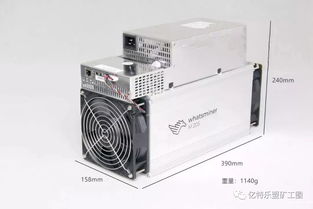In the ever-evolving world of cryptocurrency, staying ahead of the technological curve is essential. As we edge closer to 2025, Kaspa mining gear emerges as a game-changer, beckoning miners with promises of unparalleled efficiency and profitability. But what exactly sets this hardware apart, and how can enthusiasts leverage it to unlock new streams of revenue? This ultimate buyer’s guide delves deep into the heart of Kaspa mining machines and their hosting solutions, offering insights that resonate with both seasoned miners and crypto newcomers alike.
Mining, at its core, is the process of validating transactions and securing blockchain networks—be it Bitcoin’s robust ledger, Ethereum’s smart contract platform, or emerging chains like Kaspa. Amongst these, Kaspa is carving out a niche, leveraging a consensus mechanism that boasts rapid block times and high throughput. This rapid validation requires mining rigs that aren’t just powerful but optimized for the Kaspa protocol, a need aptly met by 2025’s advanced Kaspa mining machines.

What distinguishes Kaspa miners from conventional Bitcoin or Ethereum miners? While BTC mining rigs generally rely on SHA-256 hashing algorithms, and ETH mining rigs pivot towards Ethash, Kaspa’s unique GHOSTDAG consensus requires dedicated hardware acclimated to its protocol intricacies. The 2025 Kaspa mining gear integrates cutting-edge ASIC chips specially designed to maximize hash rates without compromising energy consumption. These devices dramatically reduce electricity costs — a critical consideration for mining farms operating at scale.
When contemplating mining operations, the horizon extends beyond mere hardware. The hosting of these machines—off-site management, cooling solutions, network security, and consistent uptime—is pivotal. Modern mining farms leverage hosting services where miners can deploy their rigs remotely, entrusting facility operators with adequate maintenance and operational efficiency. This symbiosis between miner and hosting platform is a linchpin for sustained profitability, whether one’s focus is Bitcoin, Ethereum, Dogecoin, or the fast-growing Kaspa ecosystem.

Moreover, the diversity in cryptocurrency mining options presents both opportunity and complexity. Bitcoin (BTC) miners continue to dominate in sheer scale and market value, but Ethereum (ETH), with its transition to proof-of-stake, shifts the dynamics, nudging miners to explore alternative coins like Kaspa or Dogecoin (DOG). Dogecoin, initially a meme coin, has garnered substantial attention due to its community-driven approach and lower mining difficulty, making it accessible to miners with mid-tier rigs.
For traders and investors, the synergy between physical mining operations and digital currency exchanges creates fertile ground for profit. Miners convert their mined assets into tangible returns by trading on exchanges, harnessing market volatility or holding long-term based on bullish predictions. The integration of mining data analytics with exchange platforms further empowers users to make informed buy or sell decisions aligned with real-time network performance and price shifts.
With Kaspa’s rapid transactions and scalable architecture, its mining ecosystem represents a fresh frontier. Mining rig manufacturers targeting this niche optimize for lower latency and higher transaction throughput, critical metrics that bolster network security while ensuring steady block rewards. Given the projected upgrades in mining hardware by 2025, those investing in Kaspa miners are poised to capitalize on the coin’s unique advantages—lower energy overhead, increased decentralization, and network resilience.
However, the decision to purchase mining equipment demands a keen understanding of the total cost of ownership. Hardware acquisition is only the first step; additional expenses include electricity, cooling, network connectivity, and occasionally, mining pool fees. Hence, hosting providers play a pivotal role, offering turnkey solutions that encapsulate these considerations with scalability and efficiency at the forefront.
In parallel, miner software—the interface between hardware and the blockchain—has become increasingly sophisticated. Automation of firmware updates, real-time performance monitoring, and seamless integration with multiple exchanges empower miners. This dynamic ecosystem fosters agility, allowing quick pivots across different cryptocurrencies as market trends evolve. The ability to switch focus seamlessly between BTC, ETH, DOG, or Kaspa mining pools is invaluable in optimizing profits.
Looking ahead, the prospect of Kaspa mining gear in 2025 isn’t merely about incremental improvements in hash rates or energy efficiency. It signifies a paradigm shift—mining machines engineered specifically to harness the potential of a next-generation blockchain that prioritizes speed, scalability, and user empowerment. For miners aiming to diversify their portfolios or reduce reliance on legacy coins, Kaspa mining hardware and hosting present a compelling proposition.
The heart of mining profitability lies in the delicate balance of operational costs versus earned rewards. Advances in Kaspa mining gear have tipped scales favorably, especially when paired with expert-hosted mining farms that mitigate downtime and maximize uptime. As mining rigs become more modular and accessible, smaller players can enter the ecosystem, fostering decentralization and enhancing network security—a win-win scenario for all involved.
In essence, 2025 is shaping up to be a pivotal year for mining enthusiasts. Whether your passion aligns with Bitcoin’s established dominance, Ethereum’s evolving canopy, Dogecoin’s playful yet potent community, or Kaspa’s promising innovation—the right mining gear and hosting solutions are critical catalysts. Embarking on this journey equipped with the latest Kaspa mining technology could very well unlock the profits and possibilities that the next wave of blockchain evolution heralds.
Leave a Reply